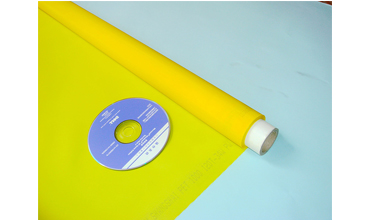Common faults and analysis of screen printing (Two)
Dec. 17, 2019
As the earliest printing process, silk screen printing has a long history. In the process of using technology, there are often failures, and silk screen failures have a single cause, but more are the result of the intricate and complex causes.
Second, the ink is not firmly fixed on the substrate
(1) When printing on glass printing meshs, it is very important to perform strict degreasing and pre-treatment inspections on the printing materials before printing. Causes poor adhesion between ink and substrate. Inadequate surface treatment of plastic products before printing can also cause the failure of ink fixing.
(2) Insufficient adhesion of the ink itself causes the ink film to be immobilized. It is best to replace other types of ink for printing. The improper selection of the dilution solvent will also lead to the phenomenon of poor adhesion of the ink film. When selecting the dilution solvent, the nature of the ink should be considered to avoid the phenomenon of poor adhesion of the ink to the substrate.
Third, ink film edge defects
In screen printing products, a common problem is jagged burrs (including defects or broken lines) on the edges of the printed ink film. There are many reasons for the burrs, but the main reason is the quality of the screen printing version provided by silk screen printing mesh supplier.
(1) The resolution of the photoresist is not high, resulting in broken lines or incompleteness in the fine lines.
(2) The exposure time is insufficient or the exposure time is too long, and the development is insufficient, and the edges of the screen printing plate are not uniform and jagged. On a good screen printing plate, the edges of the text should be smooth and tidy.
(3) The surface of the screen printing plate is not flat. When printing, there is still a gap between the screen printing plate and the substrate. Due to the suspended ink penetrating, burrs appear on the edges of the printing ink.
(4) During the printing process, due to the expansion of the plate film after contact with the solvent, and the degree of expansion in the warp and weft directions is different, the surface of the plate film has unevenness. When printing, the screen printing plate and the substrate contact surface partially gaps, and the ink is suspended Penetration can cause burrs on the ink film.
Polyester Screen Mesh
In order to prevent the appearance of jagged burrs, the following solutions can be considered:
a. Select high mesh screen making;
b. Use high-sensitivity photosensitive materials for plate making;
c. Make a screen printing plate with a certain film thickness to reduce swelling and deformation;
d. Try to use the oblique change screen method to stretch the screen, the best angle is 22.5 °;
e. Fine line printing, try to use indirect plate making method as much as possible, because the indirect method plate is less likely to have burrs;
f. In the process of plate making and printing, try to control the temperature expansion factor and use a photosensitive material with a small expansion coefficient;
g. Improve the quality of plate making, ensure that the surface of the polyester screen mesh plate is smooth and smooth, and the edges of the screen printing plate are neat;
h. Use a water spray gun to wash the screen printing plate to improve the development effect;
i. The distance from the substrate and the scraper angle should be appropriate.








